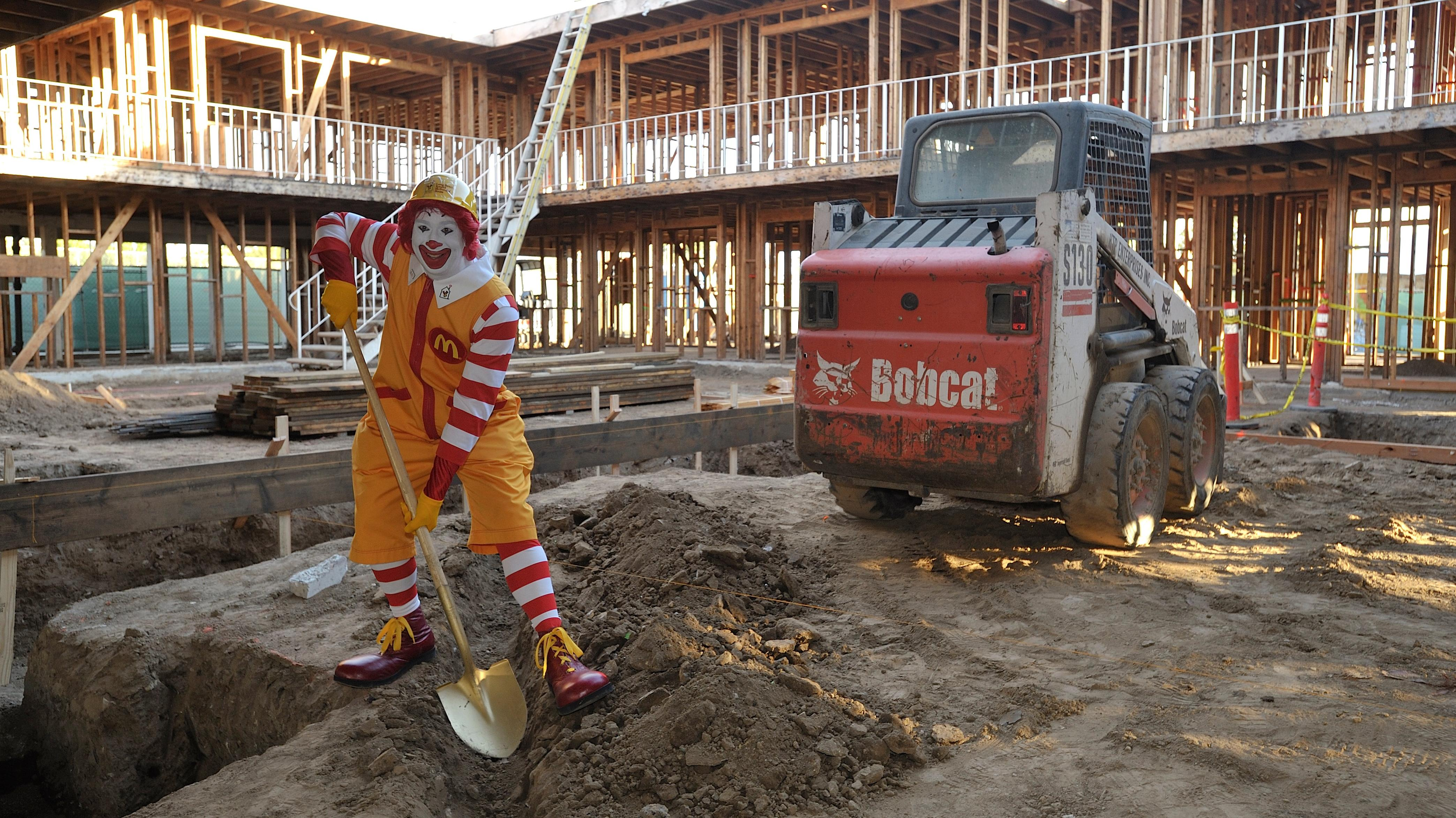How McDonald's Ends Up In One Town And Not Another
Why some rural communities still don't have a lot of fast food options.
Now that I live in Chicago, I sometimes take for granted the ubiquity of fast food joints. Nearly every apartment I've lived in over the last 13 years has been within blocks of a Dunkin', a Taco Bell, a Chipotle, a McDonald's, and/or a Burger King, or even a White Castle. But I haven't always lived this way, and there are still towns across the country that don't have easy access to a drive thru. Case in point: Howard Lake, Minnesota.
With a population of just under 2,000, Howard Lake has gone up until now without a proper fast food joint within city limits. But according to Minnesota radio station WJON, that's about to change—the town just west of the Twin Cities is getting an A&W next month. The restaurant will be opened by the current owners of a gas station/coffee shop called The Pit Stop, who said in an announcement, "We have great customers and a supportive community. We look forward to providing a new and exciting place for them to gather and enjoy great food."
Why do some small towns not have fast food chains?
I'm from Rockton, Illinois, a small town on the edge of the Illinois/Wisconsin border that had a population of about 5,000 while I was growing up. Residents call it the "Village" of Rockton and frequently boast about its small town charm.
It's the preservation of that only-exists-in-a-Hallmark-movie vibe that for years kept any chains, food-related or not, from opening in the area, and even prevented the addition of a stoplight for far too long (to this day there is a particularly charged group of locals who are rallying to have it taken down). When a McDonald's finally opened in Rockton city limits in 2017, it was built on the outskirts of town where its golden arches wouldn't infringe on the historic buildings and small business on Main Street (yes, it's actually called Main Street). But it's not just the fervor of passionate residents that keeps fast food chains away—there's a complicated history behind the way that fast food franchise locations are chosen in the first place.
The tumultuous history behind fast food development
Chin Jou, author of the book Supersizing Urban America: How Inner Cities Got Fast Food With Government Help, writes at Timeline:
By the 1960s, the suburban markets in the U.S. were becoming increasingly saturated with fast food restaurants, and the big chains were looking to expand into inner cities. Around the same time, blighted urban neighborhoods were beset by rioting that broke out in response to long-simmering tensions with police and the assassination of Martin Luther King Jr. Starting in the late 1960s, these developments would inform partnerships between fast food companies and federal programs that helped subsidize fast food.
Essentially, then president Richard Nixon introduced federal loan guarantees for Black-owned businesses under the guise of supporting a marginalized group, but what he was really trying to do was battle civil unrest. This led to poor urban areas being flooded with fast food franchises, and in turn, those brands started targeting Black and Latinx consumers in their advertising.
Meanwhile, business owners looking to take advantage of that loan weren't setting up shop in rural, predominantly white areas like Howard Lake and Rockton, and such towns weren't exactly clamoring to replicate what was then viewed as an inner-city landscape. Jou concludes her piece with this detail:
Studies investigating the geographic distribution of fast food restaurants have found that in many of America's cities, minority communities are home to more fast food restaurants than majority-white areas. In one 2004 study, researchers mapped fast food restaurants in New Orleans and discovered that shopping districts in communities that were 80 percent African American averaged six more fast food outlets than predominantly white areas of the same size.
What is the future of fast food development?
According to an industry report from IBISWorld, the number of fast food businesses in the United States has risen an average of 1.3% per year over the last five years, a total of 204,555 locations as of 2022. With a total of 19,502 incorporated cities in the U.S. as of 2018, that means that if evenly distributed, each city in America would have about 10 fast food spots. Of course, we know that's not how it works. But because there's seemingly no end to new fast food franchises popping up across the country, maybe it's time to put more thought into where exactly those locations go over the next handful of years.
Instead of oversaturating urban areas with McDonald's locations, we should ensure that federal loan guarantees also incentivize the development of fresh markets and other affordable quick meal options that offer more nutrition and simply more variety beyond a burger and fries, but with equal convenience factor. And hey, small towns, it cuts both ways: Why not allow an aspiring franchisee to bring the joy of Taco Bell to people yearning to try a Doritos Loco Taco without making a road trip of it?
We're not in the business of abolishing fast food. Instead we should make sure it's one of many options (not the only option) for potential business owners and casual diners alike, no matter where they live.
